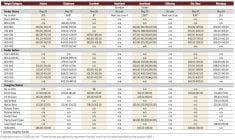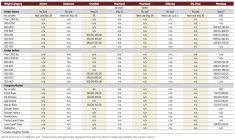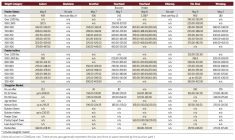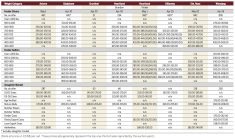The fall calf run was in full swing across Manitoba during the week ended October 25, with most auction yards reporting larger volumes of feeder cattle than the week prior.
The majority of producers have finished harvesting their crops, prompting them to start focusing on marketing their calves.
“It’s basically all calves now,” said Keith Cleaver, manager of Heartland Livestock Services in Brandon. “There are still a few yearlings, but, mostly calves.”
Auction yards across the province saw anywhere from 1,068 to 3,442 total cattle sold during the week, up from 685 to 2,918 cattle the week before.
Read Also

Slaughter cattle market still strong
Most cattle auction sites across Manitoba have slowed their operations as summer approaches. The cattle going through the rings during…
Cleaver expects the fall calf run will last throughout the month of November, and that activity will start to slow down around Christmastime.
Some of the higher-quality classes of feeder cattle in Manitoba brought in slightly stronger prices amid good demand compared to the week prior. Prices for the lower-quality cattle were hurt by spotty demand. But, overall demand was still strong for most cattle, which kept the majority of prices steady.
Cleaver said that buyers from Eastern and Western Canada came to purchase feeder cattle in Brandon during the week. He added that there was some demand from south of the border as well.
“Even the U.S. (buyers) are taking some calves right now, which is a little unusual,” he said. “Normally, they don’t take too many wet-nosed calves.”
One of the reasons why the U.S. was purchasing feeder cattle from Manitoba was due to the sharp downswing in the value of the Canadian dollar, which made prices more attractive to buyers from the country. The Canadian currency lost more than a cent during the week, and ended at US95.65 cents on October 25.
Cattle numbers are also down in the U.S., so they’re sourcing feeders from up north in Canada to help build up their herds, Cleaver added.
But, the U.S. wasn’t a big buyer of Manitoba butcher cattle, as Tyson Foods Inc., the third-largest buyer of Canadian slaughter cattle, announced it won’t be purchasing slaughter cattle from Canada anymore. The company said their reasoning was because the new COOL policy makes buying and marketing Canadian butcher cattle too expensive.
Cleaver noted that the news didn’t help slaughter cattle prices in Manitoba, especially for the butcher heifers and steers, but it could be worse.
“The reality of it is there’s not near as many cattle being finished in Manitoba now as what there used to be,” he said.
Most of the slaughter cattle in Manitoba head west to be finished, so prices there may see more of an immediate impact.
Cleaver added that there are still other plants in the U.S. buying Canadian slaughter cattle, including cows and bulls.
The number of slaughter cattle marketed through Manitoba’s auction marts increased during the week, as it is the seasonal time of year when more are sold, Cleaver said.
Prices were mostly steady compared to the week prior. Some classes moved lower, undermined by the increase in volume and slowdown in demand now that the barbecue season has come to an end.


















